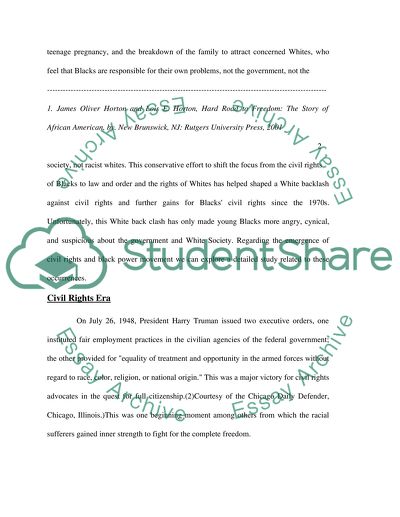Cite this document
(“From civil rights to black power Essay Example | Topics and Well Written Essays - 2500 words - 1”, n.d.)
Retrieved from https://studentshare.org/miscellaneous/1543796-from-civil-rights-to-black-power
Retrieved from https://studentshare.org/miscellaneous/1543796-from-civil-rights-to-black-power
(From Civil Rights to Black Power Essay Example | Topics and Well Written Essays - 2500 Words - 1)
https://studentshare.org/miscellaneous/1543796-from-civil-rights-to-black-power.
https://studentshare.org/miscellaneous/1543796-from-civil-rights-to-black-power.
“From Civil Rights to Black Power Essay Example | Topics and Well Written Essays - 2500 Words - 1”, n.d. https://studentshare.org/miscellaneous/1543796-from-civil-rights-to-black-power.


